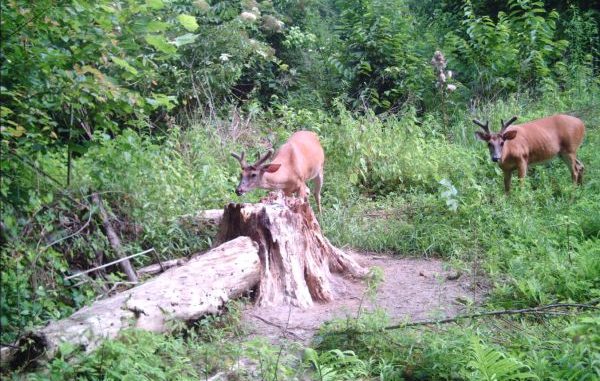
Trail cams don’t always point to the right stand selection
Part of collecting valuable data to assist hunters with picking an opening day hunting stand is to spend time observing the areas around established stands or spots under consideration for stand placement.
Yea, sure, a stealthily placed trail camera can get some evidence, but does it catch where the deer enter the field or leave it?
While trail cams are great and widely used, hunters do run the risk of contaminating potential hunting areas with human or other scents collected from everyday life around home or camp. So, observing a food plot, deer funnel, acorn tree, or other likely deer areas needs to be done from a fair distance away.
This type of long-range observation absolutely demands quality optics.
Binoculars
I like binoculars for their ease of use, general lightweight carry, and quick focusing features. They are a snap to bear in on targets for observation. Hang them around your neck or with a chest harness system and they are ready to use in a second.
When shopping for binoculars, just like rifle optics, buy the best you can afford. I consider the 8×40, 10×40, or 12×50 size ranges the best compromises for deer observations out to several hundred yards.
Look for coated lenses, a rubberized external wrap, eyepiece focus, and an easy-to-adjust binocular focus wheel. Get a neoprene binocular strap such as a Vero Vellini brand.
I have two primary binoculars. One is a discontinued Pentax 9×63 unit. Big? Yes! Heavy? You bet! But for my money they are the best long-range binoculars ever sold. Every time I break them out around a hunting guide, I never get them back.
My other “everyday” binocular is a 10×40 Zeiss. My other favorites are a Leupold Tactical 10×50, a small Alpen Optics 8×32, and an Optics Planet OPMOD 8×40.
Yeah, I really like binoculars.
Spotting scopes reach out there
A little more cumbersome to use when there is a lot moving around, but the hassle involved in using spotting scopes is worth the observational quality they provide.
The best answer to the question of whether or not to use a tripod with a spotting scope is to do so if it is convenient. The extra stability really can make a difference for watching deer at a long-range distance.
Know that most spotting scopes will die off in low light, but the magnification can take up the slack.
My usual spotting scope is an Optic Planet OPMOD 20×60 that I can mount on an optional short tripod, a regular tall photo tripod, or even a pad to use out of the window of a vehicle or shooting house.
I also use a Leupold fixed 25×50 scope mounted in a BushHawk shoulder stock. That set up really works well.
Little else replaces eyes on the terrain as observational time with good optics. Add time to your pre-season scouting for area observing, collecting insights for choosing your opening day hunting stand.


